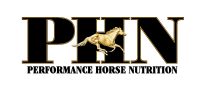FEEDING
MAGNESIUM
TO HORSES

Written by
Dr. Stephen Duren & Dr. Tania Cubitt – Performance Horse Nutrition
There has been a lot of discussion about magnesium supplementation in horses. It has been reported to have a calming effect as well as being beneficial for obese horses and those predisposed to grass induced laminitis. However, before you go out and purchase a magnesium supplement for your horse we need to understand how magnesium works in the equine body and the potential problems can arise if too much is fed.
Magnesium constitutes about 0.05% of the body mass. Sixty percent of magnesium in the body is found in the skeleton and about 30% in the muscle. Magnesium is important in the blood and plays a role as an activator of many enzymes and participates in muscle contractions. Magnesium deficiencies or abnormalities have an effect on neuromuscular function and cardiac tissue. As well as being important for the function of nerve and muscle, Magnesium is involved in the formation of one of the principle components of bone. In addition, Magnesium is necessary for the maintenance of electrolyte balance, particularly for Calcium and Potassium. Magnesium is also a very important as a co-factor in enzymes. Horses that are deficient in magnesium show a variety of symptoms, including nervousness, muscle tremors and incoordination. Magnesium is primarily absorbed from the small intestine.
The normal blood level for Magnesium in horses is 2.2-2.7mg/dl, according to NRC, serum magnesium values below 1.6mg/dl are defined as hypomagnesaemia. According to NRC (6th Ed.2007), an intake of 20mg of Magnesium per kilogram of bodyweight per day is necessary to maintain normal blood serum levels. Thus, for a 500kg horse in light to moderate exercise, an intake of 10g per day is necessary to maintain blood levels at the minimum value reported.
Deficiencies in magnesium can result in nervousness, muscle tremors, incoordination, increased respiration and even death. Many commonly used feedstuffs contain about 0.1 to 0.3 percent magnesium with an absorption rate of approximately 40 to 60 %. Excessive magnesium will be excreted in the urine, but overdoses have been linked to decreased calcium and phosphorus uptake, compromised intestinal integrity, heart conduction problems and renal trouble, so it’s important not to over supplement. The maximum tolerable level in the total diet is estimated at 0.8%, for a 500kg horse in light to moderate exercise consuming 2 to 2.25% BW that equates to 80 to 90g of magnesium in the total diet.
The most common form of Magnesium available is Magnesium Sulfate, commonly called Epsom salts. One side effect of regular feeding of Epsom salts is diarrhea. The usual form used in animal feeds is Magnesium Oxide, a fine white powder. Magnesium Oxide is about 50% absorbable, depending on the relative levels of Calcium also present. Magnesium can also be supplied as Magnesium Citrate and Magnesium Gluconate.
Magnesium is often fed as a calming supplement and until recently this was an anecdotal practice. A group of researchers in Australia fed 10g of added magnesium aspartate (total diet added mg plus ration – hay and concentrate, was approx. 21g of magnesium) and compared the flight response to horses that had been administered 0.04mg/kg BW of Acepromazine and noted similar responses. It should be noted that urinary calcium excretion was also higher in those horses supplemented with 10g of magnesium.
No more than 30g of magnesium should be in the total diet as a safe upper limit. Caution should be taken when supplementing additional magnesium regularly as this can greatly affect magnesium intake.

